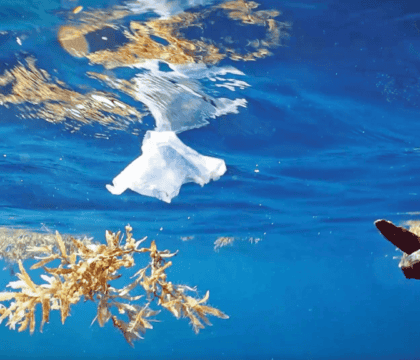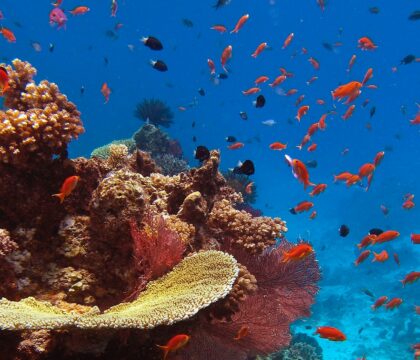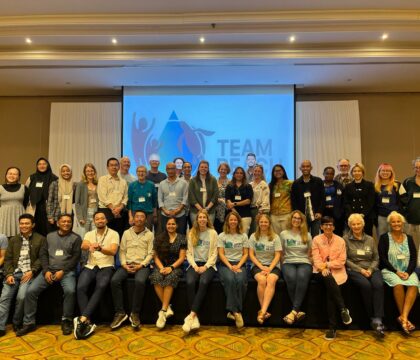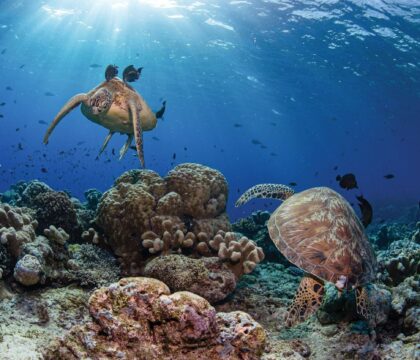August 12, 2019 • Blue Habits Tips, News Announcements, Program Updates, Resources
We are thrilled to share the third episode of our Blue Habits video series, a five part docu-series that explores key issues in ocean conservation and aims to motivate individual actions for ocean conservation. Blue Habits: Episode 3, Trinidad was filmed during our most recent Five for 50 expedition to Trinidad and explores the issue of sustainable seafood through the lens of chef Trevor Kunk, who has worked in some of the top restaurant kitchens in the country. We hear what drives Trevor to care about sustainability, we explore the bycatch problem in Trinidad, and we try to find sustainable seafood solutions that will support healthy sea turtle populations, healthy oceans, and healthy coastal communities for generations to come.
Watch Blue Habits: Episode 3, Trinidad

At the peak of the nesting season, as many as 400 leatherback turtles come ashore to nest each night along a small stretch of sand (1 km / 0.6 mi) at Grande Riviere beach on Trinidad’s north coast—the world’s densest nesting colony of leatherback turtles, by far. Combined with nearby Matura beach, Trinidad is home the world’s second largest nesting population of these magnificent animals.
It was this nearly unfathomable spectacle of nature that drew a small group of Oceanic Society supporters, friends, and partners including photographer Ben J. Hicks to travel to Trinidad in May on the third of our Five for 50 expeditions celebrating our 50th Anniversary as America’s oldest non-profit dedicated to ocean conservation. Over three late nights and early mornings, we witnessed dozens of leatherback turtles in various stages of nesting, as well as hatchlings emerging from the sand and making their way to the sea. At one point we counted more than 20 turtles nesting simultaneously, so many that each new nesting attempt seemed to dig up a prior nest.
Beyond seeing these amazing animals, the purpose of our expedition was to explore the biggest threat facing leatherbacks and other sea turtles worldwide—fisheries bycatch—and to seek solutions to this complex problem. We spoke with local fishermen, conservationists (including our amazing local hosts and partners, Nature Seekers), and community members in Trinidad, and we brought accomplished New York chef and sustainability expert Trevor Kunk (Director of Culinary Innovation at The Little Beet) to help us explore the broader issue of sustainable seafood from many sides.
Choosing Sustainable Seafood
Making responsible seafood choices is one of the most important ways that you can contribute to healthier oceans. Thankfully, there is growing consumer demand for seafood that is both ethical and sustainable. An increasing number of people want to ensure they are making responsible decisions when it comes to their seafood choices, and more than 80% of global seafood consumers believe it is important for seafood to be protected for future generations. For more suggestions on making good seafood choices, visit our Blue Habits program’s guide to choosing sustainable seafood.
About Five for 50
Oceanic Society’s Five for 50 campaign began with an expedition to Palau with Dr. Sylvia Earle and Mission Blue, and Fisk Johnson, the CEO of SC Johnson, and was followed by an expedition to see whales and whale sharks in Baja California, Mexico. These expeditions bring together thought leaders and travelers to experience the oceans’ beauty and highlight important ocean threats including plastic pollution, endangered species, sustainable tourism, climate change, and fisheries management.
Upcoming Trips
The remaining two Five for 50 expeditions are to Raja Ampat (October 2019) to explore coral reefs and the impacts of a changing climate, and to the Galápagos Islands (December 2019) to see Galapagos’ iconic species.




